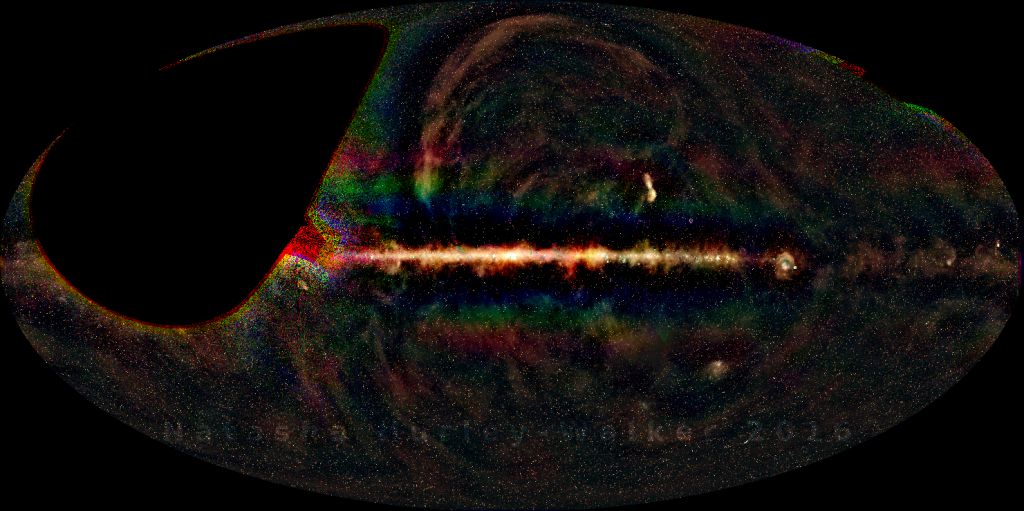I am an Associate Professor and ARC Future Fellow, who helped to commission the low-frequency SKA precursor radio telescope, the Murchison Widefield Array (MWA), located in outback Western Australia. After a long day testing new receivers, I took this photo of one of the telescope’s 128 “tiles”, a novel design which replaces the more familiar dish design of higher-frequency radio telescopes:

I used the MWA to conduct the GaLactic and Extragalactic All-sky MWA survey, or “GLEAM” for short. It has a resolution of two arcminutes (about the same as the human eye) and spans the frequency range 72 — 231 MHz, from radio to digital TV. We have made thousands of observations of the sky, and I have used the supercomputing facilities at the Pawsey Center to calibrate the observations, produce images, and knit them together across the sky, producing this view:
You can explore the GLEAM sky and other wavelengths using the GLEAMoscope:
Using the MWA’s huge field-of-view, my team has discovered a new kind of repeating radio source in space, the ‘long-period radio transients’. Our first discovery was only active for a few years, and we missed the fireworks, but what we saw in our archival data was quite amazing:
When we searched the skies for more, we found something even more incredible: these objects have been hiding in plain sight for decades:
Closer to home, I used the MWA to image plasmospheric ducts in the Earth’s ionosphere, which distort our observations of distant radio galaxies, but by doing so, reveal themselves.
I have a passion for outreach, talking to kids about careers in science, appearing on radio and TV, speaking at local outreach events such as Pint of Science, and have made multiple appearances at Astrofest, WA’s largest public astronomy event. You can find out about my upcoming events on my website.
My TED talk on low-frequency radio astronomy has been viewed over 2M times; check it out here!
As a result of my research and public engagement, I was named WA’s Young Tall Poppy Scientist of the Year for 2017, and one of the ABC’s Top 5 Scientists for 2018. I am a keen advocate for diversity in STEM, and am one of Science and Technology Australia’s Superstars of STEM for 2019-2020. I received the Anne Green Mid-Career Research Prize from the Astronomical Society of Australia in 2022, and in 2024 was named on the ABC’s Hottest 100 Scientists.
Check out my website for more details.
ICRAR Statement
The content of this page is maintained by Natasha Hurley-Walker, please contact them with any questions or comments on this content.